Click here for pictures of latest litter
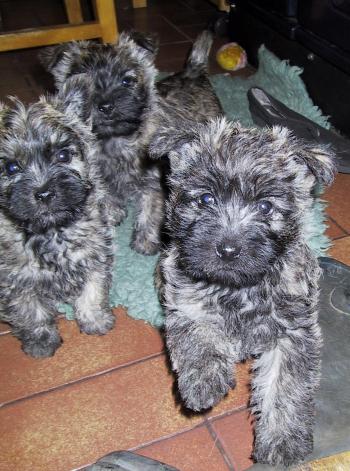
Line breeding follows the Thimswarra/Avenelhouse lines. The Thimswarra line was originally developed by the international show judge Mr Alf Arrowsmith, and his wife Lil.
Occasionally we have puppies for sale.
Please do not support the shameful practice of puppy farming, buy from a reputable breeder or contact dog rescue.
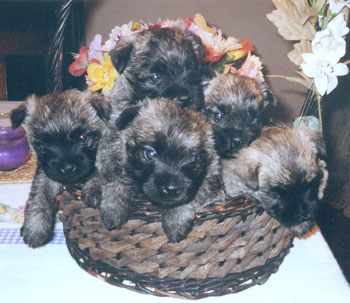
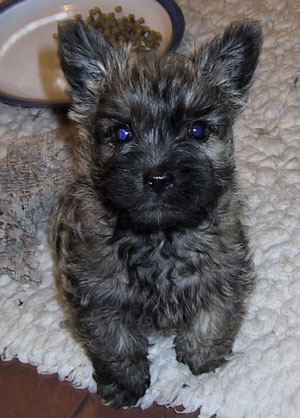
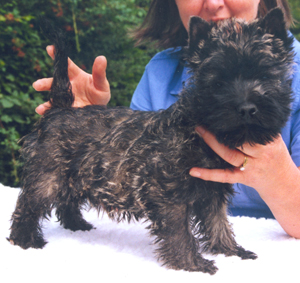
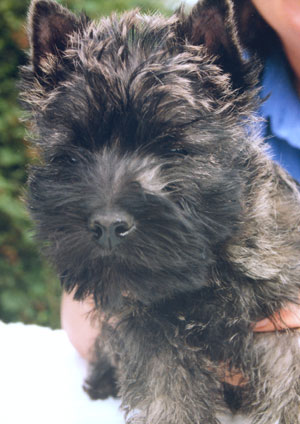
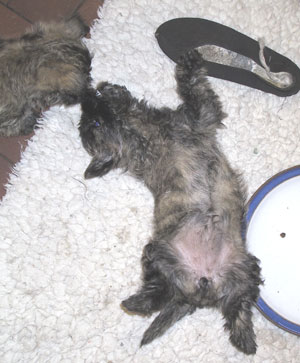
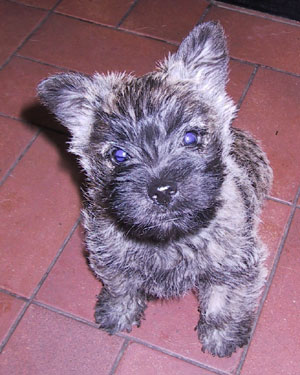
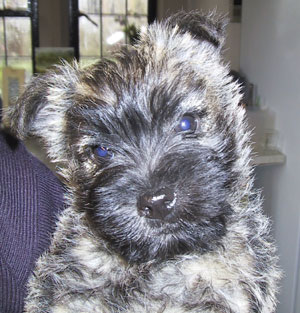
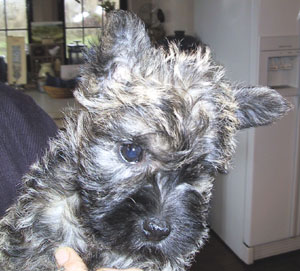
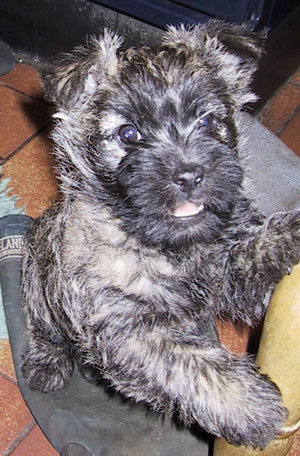
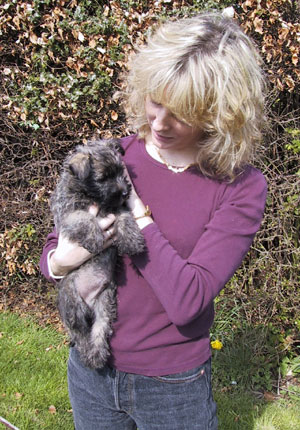
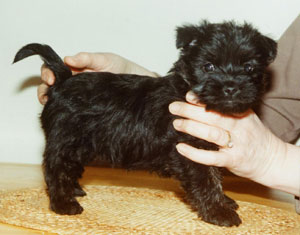
BREED STANDARD
Characteristics:
Should impress as being active,
game and hardy.
General Appearance:
Agile, alert, of workmanlike,
natural appearance. Standing well forward on forepaws. Strong quarters. Deep in
rib, very free in movement. Weather-resistant coat.
Temperament:
Fearless and gay disposition, assertive
but not aggressive.
Head & Skull:
Head small, but in proportion to
body. Skull broad, a decided indentation between the eyes with a definite stop.
Muzzle powerful, jaw strong but not long or heavy. Nose black. Head well
furnished.
Eyes:
Wide apart, medium in size, dark hazel. Slightly
sunk with shaggy eyebrows.
Ears:
Small, pointed, well carried and erect, not too
closely set nor heavily coated.
Mouth:
Large teeth. Jaw strong with perfect, regular
and complete scissor bite, i.e. upper teeth closely overlapping lower teeth and
set square to jaws.
Neck:
Well set on, not short.
Forequarters:
Sloping shoulders, medium length of leg,
good but not too heavy bone. Forelegs never out at elbow. Legs covered with
harsh hair.
Body:
Back level, medium in length. Well sprung
deep ribs, strong supple loin.
Hindquarters:
Very strong muscular thighs. Good,
but not excessive, bend of stifle. Hocks well let down, inclining neither in
nor out when viewed from the rear.
Feet:
Forefeet, larger than hind, may be slightly
turned out. Pads thick and strong. Thin, narrow or spreading feet and long
nails objectionable.
Tail:
Short, balanced, well furnished with hair but not
feathery. Neither high nor low set, carried gaily but not turned down towards
back.
Gait:
Very free-flowing stride. Forelegs reaching well
forward. Hind legs giving strong propulsion. Hocks neither too close nor too
wide.
Coat:
Very important. Weather-resistant. Must be
double-coated with profuse, harsh, but not coarse, outer coat, undercoat short,
soft and close. Open coats objectionable. Slight wave permissible.
Colour:
Cream, wheaten, red, grey or nearly black.
Brindling in all these colours acceptable. Not solid black or white, or black
and tan. Dark points such as ears and muzzle, very typical.
Weight & Size:
Approximately 28 cm to 31 cm (11 to
12 inches) at withers, but in proportion to weight - ideally 6 to 7 kgs. (14-16
lbs).
Faults:
Any departure from the foregoing
points should be considered a fault and the seriousness of the fault should be
in exact proportion to its degree.
Note: Male animals should have two apparently normal testicles fully descended into the scrotum.
Breed Standard as passed by The Executive Committee of The Kennel Club at its meeting on November 30th, 1982.
BRIEF HISTORY OF THE CAIRN TERRIER
The word Cairn means a heap of stones and the word Terrier is derived from the French terre. Therefore the name Cairn Terrier was given to a small active dog whose environment was weaving in and out of rocks and cairns or going to ground to flush out small mammals. So the Cairn’s characteristics were influenced by its original environment and it still retains them today.
The geographical origin of the Cairn terrier is wrapped in mystery but it was probable that it was the foundation terrier for the highlands of Scotland from which other terrier breeds were developed. King James I of England ordered six of these ‘earthe dogges’ to be sent to France and such was their value that they were transported in two separate ships (in case of accidents). He also directed they should be obtained from Argyllshire, where there is good reason to believe the Cairn originated. So for three hundred years the Cairn Terrier was evolving in Western Scotland and also closely associated with the Isle of Skye.
They were exhibited at a Show for the first time at Inverness in September 1909. By 1910 thirty-six Cairns were registered at the Kennel Club. In 1912 Challenge Certificates were offered for the first time at the Richmond Show. The Cairn is now one of the most popular of the terrier breeds with the motto ‘best little pal in the world’.